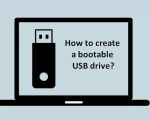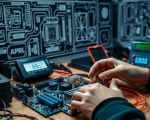How to Repair a Computer Box for Your Car: A Step-by-Step Guide
- 1. Understanding the Role of the Car Computer Box
- 2. Identifying Common Problems with the Car Computer Box
- 3. Essential Tools for Repairing the Computer Box
- 4. The Repair Process: Step-by-Step Guide
- 5. Preventive Maintenance for Car Computer Boxes
- 6. When to Seek Professional Help
1. Understanding the Role of the Car Computer Box
The car computer box, often referred to as the engine control unit (ECU), is the brain of your vehicle’s electrical system. It manages various essential functions like engine performance, transmission shifts, and fuel efficiency. Without it, your car’s performance would be severely compromised. In this section, we will delve into how this complex system works and why it’s crucial to keep it in top shape.
2. Identifying Common Problems with the Car Computer Box
Many car owners experience issues with their computer boxes without even realizing it. Symptoms of a failing ECU can range from poor engine performance, erratic shifting of gears, to complete engine failure. By understanding the common signs of malfunction, you can address issues before they become costly repairs. Here are some of the most common problems:
- Engine stalling or misfiring
- Inconsistent fuel efficiency
- Warning lights on the dashboard
- Failure to start
Being able to identify these symptoms early will help you determine if the computer box needs attention.
3. Essential Tools for Repairing the Computer Box
Before embarking on the repair process, it’s crucial to have the right tools at hand. Repairing a car computer box involves both technical know-how and specific equipment. Below is a list of the basic tools you will need:
- Multimeter for testing electrical connections
- Soldering iron for fixing broken circuits
- Diagnostic scanner for error code reading
- Wrench and screwdrivers for disassembly
Having these tools on hand will make the repair process much smoother and more efficient. If you’re unsure about the tools, consider consulting a professional or visiting a car repair shop to get a better understanding.
4. The Repair Process: Step-by-Step Guide
Now that you’ve diagnosed the problem and gathered your tools, it’s time to dive into the repair process. The following steps will guide you through a basic ECU repair:
- Disconnect the battery: Before beginning any electrical work, always disconnect your car’s battery to prevent electric shock or further damage.
- Remove the computer box: Locate the computer box (usually under the dashboard or near the engine) and carefully detach it using the appropriate tools.
- Inspect the connections: Check for any loose or damaged connections. Use the multimeter to test for continuity and voltage.
- Test for faulty components: Use a diagnostic scanner to read error codes and pinpoint faulty components in the computer box.
- Fix damaged components: If you identify any damaged circuits or components, you may need to solder them or replace the damaged part.
- Reassemble and test: Once the repair is complete, reassemble the computer box, reconnect the battery, and test the vehicle to ensure proper functionality.
Remember, each repair will vary depending on the specific issue. If you find yourself stuck or unsure, don’t hesitate to seek professional help.
5. Preventive Maintenance for Car Computer Boxes
Prevention is always better than cure. Regular maintenance of your car’s computer box can prevent future issues and help keep your vehicle in top condition. Here are some tips for maintaining your car’s ECU:
- Regularly check error codes using a diagnostic scanner
- Ensure all wiring is intact and secure
- Keep the car’s electrical system clean and free from moisture
- Have your car’s ECU inspected during routine maintenance
By following these simple maintenance steps, you can extend the life of your car’s computer box and avoid costly repairs.
6. When to Seek Professional Help
While some car owners may feel confident tackling ECU repairs on their own, certain issues require professional expertise. If you notice symptoms like frequent engine stalling, or if the repair process seems too complex, it’s wise to consult a professional. They will have the necessary equipment and knowledge to fix the issue effectively and safely.
Don't hesitate to contact a reputable service center for assistance, especially if the problem is related to sensitive components like the car’s wiring or integrated systems.





























